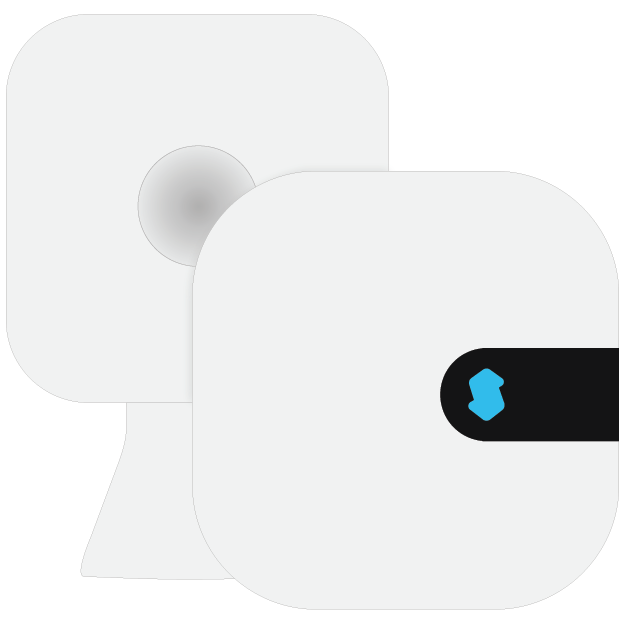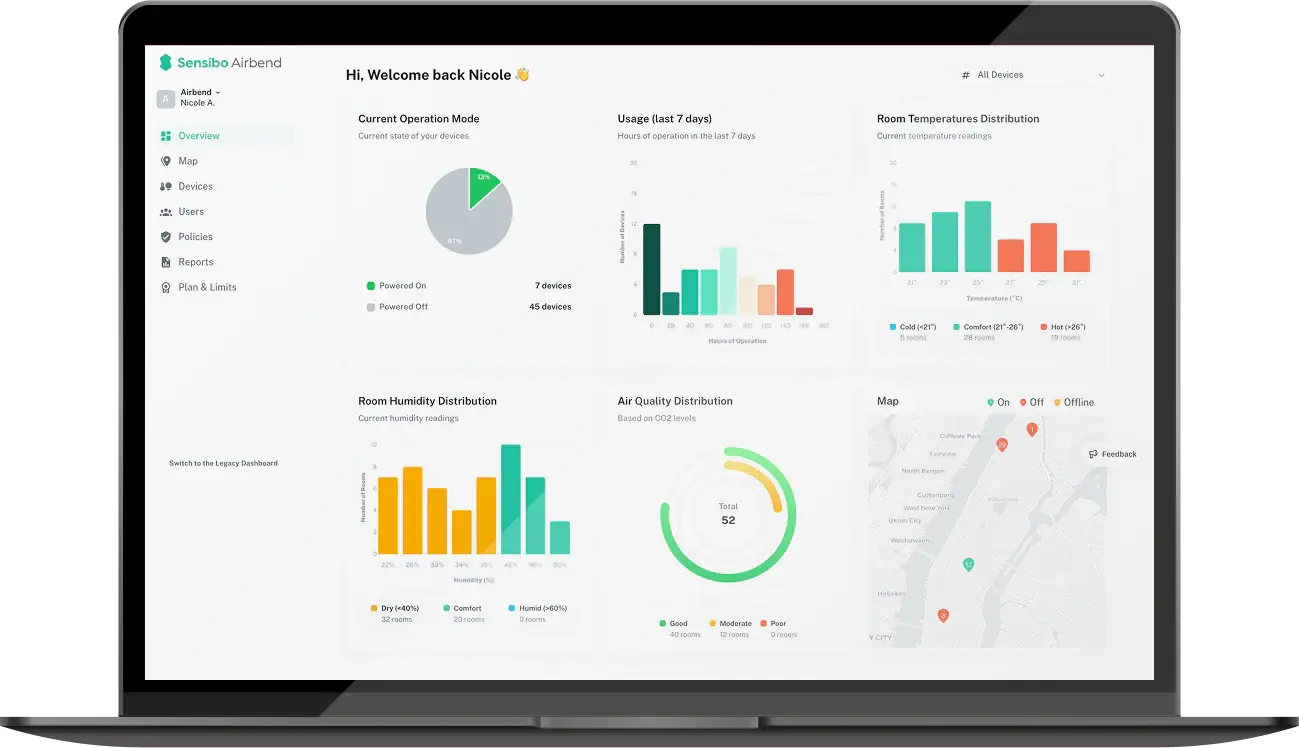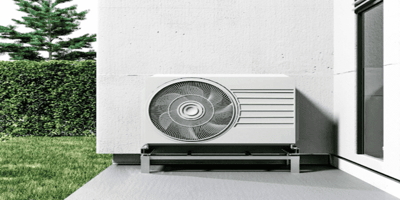How to Reset an Air Conditioner Step-by-Step
Key Takeaways
- Most AC reset button locations are on the outdoor condenser unit near the refrigerant lines, but window units often put them behind the front panel.
- The circuit breaker method works when you can't find a physical reset button—flip the breaker off, wait 30 seconds, flip it back on.
- Wait at least 30 seconds between turning off and restarting your AC; rushing this step means the reset won't take.
- A successful reset shows results within 5-10 minutes—if the unit still won't cool after 15 minutes, you're dealing with a different problem.
- Needing to reset your AC unit more than once a month signals a bigger issue like refrigerant leaks, electrical problems, or a failing compressor.
- Always turn off power at both the thermostat and circuit breaker before attempting any reset to avoid electrical shock.
Your AC quit. The temperature's climbing, and you've already fiddled with the thermostat three times. Here's something most people don't try first: turning the whole thing off and back on again.
Sounds too simple, right? But how to reset air conditioner systems fixes more problems than you'd think. Power surges mess with the control board. The system gets confused after a sudden shutdown. Sometimes the thing just freezes up like your laptop does. A reset clears all that out.
The process takes about five minutes, assuming you can find the reset button—and that's the tricky part. Different AC types hide them in different spots. Some units don't have a visible button at all. This article covers three reset methods that work for window units, central air, and mini-splits, plus how to tell if you actually fixed anything or just wasted your time.
-
Is a Reset Actually Your Solution
-
Pre-Reset Checklist: Don't Skip This
-
Locating the AC Reset Button (It's Not Always Obvious)
-
Three Ways to Reset Your AC Unit
-
What Happens Next: Reading the Signs
-
When a Reset Won't Cut It
-
FAQ
Is a Reset Actually Your Solution?
Not every AC problem needs a reset. Some issues just look like they do.
When a reset probably helps:
Your AC stopped after a thunderstorm or power outage. Lightning strikes and voltage spikes scramble control boards. The system's getting power—lights are on, you hear humming—but nothing's cooling. These situations usually respond to a reset.
The unit shuts off randomly during operation. If your AC runs for 10 minutes then quits without reason, the thermal overload switch might be tripping. A reset often gets things going again, at least temporarily.
You just had work done on the electrical panel. Any time someone messes with your home's electrical system, AC control boards can lose their settings. A quick reset restores normal operation.
 When a reset won't help:
When a reset won't help:
The outdoor unit's completely silent and dead. No humming, no fan spinning, nothing. If your AC won't turn on at all, you're looking at power supply issues, blown fuses, or tripped breakers—not something a reset fixes.
Ice buildup on the refrigerant lines. This signals low refrigerant, dirty filters, or blocked airflow. You can reset air conditioner systems all day; frozen coils need different solutions.
Strange noises started before it quit. Grinding, squealing, or banging sounds mean mechanical failure. Resetting won't fix broken parts.
The thermostat's blank or unresponsive. Dead thermostats need new batteries or replacement, not AC resets.
Quick test: Check your circuit breaker panel first. If the AC breaker's already tripped, flip it back on. That might be all you need. If it trips again immediately, stop—you've got a short circuit or ground fault that needs professional diagnosis.
Pre-Reset Checklist: Don't Skip This
Safety First
Turn off the power at the thermostat. Set it to "Off" mode, not just a higher temperature. You want zero signal going to the unit.
Flip the circuit breaker. Find your AC's dedicated breaker in your electrical panel—usually labeled "AC," "Air Conditioner," or "HVAC." Switch it to the off position.
Locate the disconnect box. Most outdoor units have a gray metal box mounted on the exterior wall nearby. Pull out the disconnect block or flip the switch inside. This cuts power directly at the unit.
Why all three? Redundancy prevents electrical shock. AC units run on 240 volts—enough to kill you. Taking an extra 30 seconds to kill power three ways beats getting electrocuted.
The Waiting Period Matters
Once power's off, wait a full 30 seconds minimum. Better yet, wait a full minute.
Here's why: capacitors inside your AC store electrical charge even after power cuts off. These components need time to discharge completely. Turn power back on too fast, and you're not actually resetting anything—you're just cycling power while the system's still "hot."
Think of it like your computer. A quick tap of the power button doesn't clear RAM the same way holding it down for 10 seconds does. ACs work the same way.
 What You Might Need
What You Might Need
- Flashlight – Reset buttons hide in dark corners
- Screwdriver (Phillips head) – Some units require removing access panels
- Step stool or ladder – Outdoor units sit on concrete pads; you'll need height to reach the top
- Your phone's timer – Don't guess the 30-second wait; actually time it
Check These Before Starting
- Clear debris around the outdoor unit – Leaves, grass clippings, and dirt block airflow and cause overheating
- Replace your air filter if it looks dirty – Clogged filters make the system work harder and trip safety switches
- Make sure all vents inside are open – Closed vents in unused rooms create pressure problems
- Verify the outdoor unit isn't buried in snow – Winter heating mode won't work if the heat pump's covered
These small fixes prevent you from resetting the same problem over and over.
Locating the AC Reset Button (It's Not Always Obvious)
Manufacturers love hiding these things. Sometimes they're labeled. Often they're not. Here's where to look based on what type of system you have.
Central Air Conditioning Systems
The reset button lives on the outdoor condenser unit 99% of the time. Walk outside and look at the big metal box with the fan on top.
Common locations:
- Near the bottom of the unit where the refrigerant lines enter (those copper tubes wrapped in foam insulation)
- Inside a small access panel on the side—look for a rectangle with screws
- On the compressor housing itself, usually as a small red or yellow button
- Behind the electrical disconnect box mounted on the wall
The button's typically red, sometimes yellow, and about the size of your pinky fingernail. You'll see it recessed into the metal, which prevents accidental pressing.
Can't find it after checking all those spots? Your unit might use a manual reset switch instead—a small lever or toggle that you flip rather than push.
Window and Portable AC Units
Window units put reset buttons in the absolute worst places.
Pull off the front plastic grill (the part with the filter behind it). Look along the control panel area where the temperature dial sits. Many units hide the reset button behind the grill on the right side.
Some models stick it on the power cord itself—check the plug end for a small button labeled "Reset" or "Test." These are actually GFCI (ground fault) reset buttons, but they'll restart your unit.
Portable ACs usually mount the reset button near the control panel on top of the unit or on the back panel near the exhaust hose connection.
Ductless Mini-Split Systems
Mini-splits rarely have physical reset buttons you can access. The reset mechanism lives inside the indoor wall unit, behind the front cover.
To reset your AC unit in these systems:
- Remove the front cover (it usually lifts up and off with clips)
- Look for a small black or red button near the right side of the unit's body
- Press and hold for 3-5 seconds
Most mini-splits prefer the circuit breaker reset method instead. Manufacturers don't want homeowners poking around inside wall units.
What If There's No Button Anywhere?
Not all units have them. Newer models and budget units often skip the reset button entirely to cut costs.
Your options:
- Use the circuit breaker method (covered below)—this works on every AC regardless of reset button presence
- Check your owner's manual for a specific reset sequence—some units require pressing certain button combinations on the remote or control panel
- Look for a fuse on the control board inside the unit—a blown fuse needs replacement, not resetting
Still stumped? Take a photo of your unit's model number plate (that metal sticker with serial numbers and electrical specs) and search "[model number] reset button location" online. Someone's asked the same question.
Three Ways to Reset Your AC Unit
Pick the method that matches your situation. Circuit breaker works for everyone. The others depend on what equipment you have access to.
Method 1: Circuit Breaker Reset (Works for All AC Types)
This is your universal solution when you can't find a reset button or when the button doesn't solve the problem.
 Steps:
Steps:
- Set your thermostat to "Off" – Don't just lower the temperature. Switch the mode selector to Off.
- Go to your electrical panel – Find the breaker labeled for your air conditioner. It's usually a double-pole breaker (takes up two slots) because ACs run on 240 volts.
- Flip the breaker to the Off position – You should hear a click. The switch moves to the opposite side from where it started.
- Wait exactly 60 seconds – Use your phone's timer. Don't guess. This isn't optional—the capacitors need time to discharge completely.
- Flip the breaker back to On – Another click. The switch returns to its original position.
- Return to your thermostat – Switch it to "Cool" mode and set the temperature 3-5 degrees below current room temperature.
- Listen for startup sounds – You should hear the outdoor unit kick on within 2-3 minutes. The fan starts spinning, and the compressor hums.
Timing matters here. Rushing the wait period means you're just cycling power without actually clearing the control board's memory. That 60-second gap makes the difference between a successful reset and wasting your time.
Method 2: Reset Button Method (When You Found the Button)
Located your AC reset button? This method's faster than the circuit breaker approach.
Steps:
- Turn off the power at the thermostat – Set it to Off mode first.
- Press the reset button once – You'll feel a small click. Some buttons stay depressed; others pop back out immediately. Both are normal.
- Wait 30 seconds – The system needs a moment to process the reset command.
- Turn the thermostat back to Cool – Set your desired temperature.
- Check for operation – The outdoor unit should fire up within 3-5 minutes.
If nothing happens: Press and hold the reset button for 3-5 seconds instead of a quick tap. Some units require a long press to register the reset.
If the button pops out immediately after you press it: That's a thermal overload switch, not a reset button. It's telling you the compressor overheated. Wait 30 minutes for the compressor to cool down, then try again. If it keeps popping out, you've got an overheating problem that needs diagnosis.
Method 3: Thermostat Reset (Digital Thermostats Only)
Modern digital thermostats sometimes cause the "AC won't respond" problem when they glitch or lose settings. Resetting the thermostat itself can reset air conditioner operation.
For battery-powered thermostats:
- Remove the thermostat from the wall plate (most pull straight off)
- Take out the batteries
- Press any button on the thermostat 5-6 times to drain residual power
- Wait 60 seconds
- Reinstall batteries
- Reattach to wall plate
- Reprogram your settings
For hardwired thermostats:
- Locate the reset button on the thermostat—usually hidden behind the faceplate or on the side
- Press and hold for 5 seconds
- The display should go blank then reboot
- Reprogram your schedule and preferences
For smart thermostats (Nest, Ecobee, Honeywell Home):
Check the app or thermostat menu for "Reset" or "Restart" options. Each brand puts it somewhere different:
- Nest: Settings > Reset > Restart
- Ecobee: Menu > Settings > Reset
- Honeywell Home: Menu > Advanced Settings > Factory Reset (warning: this erases everything)
Smart thermostats also respond to the power cycle method: flip the furnace/AC breaker off for 30 seconds, then back on. The thermostat reboots automatically.
After any reset method: Don't judge results immediately. Give the system 10-15 minutes to stabilize. The first few minutes might sound weird—louder than normal, different fan speeds, odd clicking noises. That's the system recalibrating. If it's still not cooling after 15 minutes, the reset didn't work.
What Happens Next: Reading the Signs
You pressed the button or flipped the breaker. Now what? Here's how to tell if you actually fixed anything.
Normal Startup Sequence (This Means It Worked)
First 30 seconds: Silence. The system's running self-diagnostics and checking safety switches. Don't panic yet.
30 seconds to 2 minutes: The outdoor fan starts spinning. You hear a low hum from the compressor. The fan might spin slowly at first, then speed up.
2-5 minutes: Air starts flowing from your vents. It won't be cold immediately—just room temperature air moving.
5-10 minutes: The air turns noticeably cooler. Not ice cold, but you can feel the temperature difference when you hold your hand near the vent.
10-15 minutes: Full cooling power. The air feels like what you expect from AC—cold enough to make you move away from the vent after a few seconds.
Temperature drop in the room takes longer. A typical bedroom drops maybe 2-3 degrees in the first 30 minutes. Expecting instant results means you'll think the reset failed when it actually worked.
Sounds That Are Fine (Stop Worrying)
Clicking or tapping for the first minute – Relays switching on, valves opening. Totally normal during startup.
Louder fan noise than usual – The system might run at high speed initially to catch up. It'll quiet down once the thermostat's satisfied.
Brief humming that stops and starts – The compressor cycling as it builds pressure. Give it a few cycles to stabilize.
Whooshing or rushing sounds – Refrigerant moving through the lines. You're hearing the system work exactly as designed.
Red Flags (Something's Still Wrong)
The breaker trips again within minutes – You've got a short circuit or ground fault. Stop trying to reset it. Call an electrician.
Outdoor fan spins but the compressor stays silent – The compressor's either locked up or the start capacitor failed. Resetting won't fix this.
Ice forms on the outdoor unit or refrigerant lines – Low refrigerant or blocked airflow. The system needs service, not another reset.
Burning smell from the vents or outdoor unit – Electrical problem or overheating motor. Shut it down immediately.
Air blows but never gets cold after 20+ minutes – Compressor's running but not pumping refrigerant properly. Mechanical failure, not a reset issue.
Grinding, squealing, or metal-on-metal sounds – Bearing failure or loose parts. Making these noises worse by continuing to run it costs you more in repairs.
The 15-Minute Rule
Give any reset method 15 full minutes before deciding it didn't work. Set a timer and walk away. Staring at the thermostat doesn't help.
After 15 minutes, check these three things:
- Is cold air coming from the vents?
- Is the outdoor unit running (fan spinning, compressor humming)?
- Did the room temperature drop at least one degree?
Yes to all three? The reset worked. No to any? You're dealing with something else.
 When a Reset Won't Cut It
When a Reset Won't Cut It
Some problems masquerade as simple reset issues. They're not. Here's how to spot the difference and know when to stop messing with it yourself.
Problems That Look Like Reset Issues But Aren't
Tripped breakers that trip again immediately – This signals a short circuit somewhere in the system. Could be a damaged wire, failed compressor, or bad capacitor. Each time you flip that breaker back on, you're risking fire or further damage.
Compressor tries to start but can't – You hear a buzzing or humming sound, but the outdoor unit never fully kicks on. The start capacitor's probably dead. Capacitors cost $150-300 to replace professionally. Letting the compressor keep trying to start can burn it out—that's a $2,000-4,000 repair.
Unit won't turn on at all – Complete silence from the outdoor unit, no lights on the thermostat, zero response to any button you press. This goes beyond reset territory into common reasons why your AC won't turn on—things like blown fuses, failed contactors, or dead transformers.
Refrigerant leaks – Ice on the copper lines, hissing sounds, or oily residue around connections mean refrigerant's escaping. No amount of resetting fixes a leak. The system needs repair and recharge.
Seized compressor – If the outdoor unit's completely silent—no humming, no clicking, nothing—the compressor might be locked up. This is a replacement situation, not a reset situation.
Thermostat wiring problems – Loose wires at the thermostat can make the system unresponsive. But if you're not comfortable working with low-voltage wiring, don't start pulling thermostats apart. Wrong connections can fry control boards.
The Repeat Reset Problem
Had to reset your AC unit twice in the same week? That's a symptom, not a solution.
Once is normal. Power surges happen. Things glitch. No big deal.
Twice in a month means investigation. Check your air filter, clean the outdoor unit, make sure nothing's blocking airflow. These maintenance issues can cause repeated shutdowns.
Weekly or more means failure. Something's genuinely wrong—a failing component, electrical issue, or refrigerant problem. Continuing to reset just delays the inevitable repair while possibly making the damage worse.
When to Call a Professional
Stop DIY attempts and call an HVAC tech if:
- The reset worked but the system shuts off again within 24 hours
- You smell burning plastic or see smoke
- The compressor's hot enough to hurt when you touch the metal housing (carefully)
- Breakers keep tripping regardless of what you try
- You hear loud banging, grinding, or squealing noises
- The system's more than 15 years old and having multiple problems simultaneously (might be replacement time, not repair time)
- You've already spent more than 2 hours troubleshooting with no results
Quick Troubleshooting List (Try These Before Calling)
Sometimes it's something stupid simple:
|
Problem |
Check This First |
|---|---|
|
No power to unit |
Outdoor disconnect switch in off position |
|
Unit won't respond |
Thermostat batteries dead |
|
Weak airflow |
Filter clogged (check and replace) |
|
Room not cooling |
Vents closed or furniture blocking them |
|
Outdoor unit silent |
Condenser covered in debris, grass clippings |
|
Strange noises |
Loose panels rattling (tighten screws) |
These fixes take 5 minutes and cost nothing. Worth checking before assuming you need a pro.
The Cost Reality Check
Service calls run $75-200 just to show up, before any actual work. If you've tried the basic resets and checks in this guide and nothing worked, that money's probably getting spent anyway.
But here's the thing: catching problems early saves money. A $300 capacitor replacement today prevents a $2,500 compressor replacement next month. Trying to band-aid failing equipment with repeated resets just runs up the eventual bill.
Know when you're out of your depth. There's no shame in calling someone who does this for a living.
FAQ
How often should I reset my AC?
Never, ideally. A properly functioning AC shouldn't need resets. If you're hitting that reset button more than once every few months, something's failing. Use resets for one-off problems like power outages or storm-related glitches, not as routine maintenance.
Will resetting erase my thermostat settings?
The circuit breaker and reset button methods won't touch your thermostat programming. Your schedule, temperature preferences, and WiFi settings stay intact. Factory resetting the thermostat itself—that's different. That wipes everything and you'll need to reprogram from scratch.
Can I damage my AC by resetting it too often?
Not really. Resets don't wear out components or shorten lifespan. But constantly resetting means you're ignoring an underlying problem that's getting worse. The damage comes from running a failing system, not from the reset itself.
My reset button pops back out immediately. What does that mean?
That's a thermal overload protector, not a reset button—common confusion. It pops out when the compressor overheats as a safety measure. Wait 30 minutes for things to cool down, then try again. If it keeps popping, you've got airflow problems, refrigerant issues, or a dying compressor.
Do I need to reset both the indoor and outdoor units separately?
No. When you reset the AC unit using the circuit breaker or outdoor reset button, you're resetting the entire system. The indoor air handler and outdoor condenser communicate through the same electrical circuit. Cutting power to one cuts power to both.
How long should I wait between reset attempts if the first one doesn't work?
Wait at least 15 minutes before trying again. Give the system real time to attempt a full startup cycle. Rapid-fire resets accomplish nothing except frustrating you. If two resets 15 minutes apart don't work, stop. You're not dealing with a reset-fixable problem.
Is there a difference between resetting and turning the AC off and on?
Yes. Just flipping the thermostat off and on sends a signal through the control board but doesn't actually cut power to the system. A proper reset air conditioner procedure cuts all power at the source—either the circuit breaker or disconnect box. That's what clears the control board's memory and fixes glitches.


































.jpg)

.jpg?height=200&name=photo_2024-05-10_21-06-06%20(1).jpg)

.jpg?height=200&name=photo_2024-08-16_18-39-12%20(1).jpg)